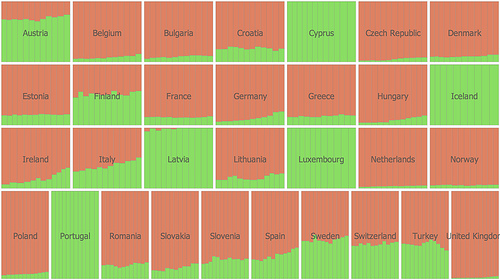With the increasing awareness of climate change not just as a real threat, but as a threat that can’t really be solved by lifestyle adjustments, all kinds of radical ideas have moved into the limelight. One of which is vertical farming. The idea is simple: take industrial scale farming out of the countryside and into the city into proper factories while making it sustainable through control of the environment. The advantages of vertical farm, according to CBC News:
- Conventional farms waste water. Despommier says irrigation accounts for 70 per cent of worldwide water use, and much of that is wasted as runoff, but because it’s contaminated with silt, pesticides and fertilizers, it can’t be captured and reused. Vertical farms would grow crops hydroponically, in a water-and-nutrient solution, or perhaps aeroponically, using a mist of nutrient-laden water. The approach could grow the same crops with as little as 10 per cent of the water used in traditional agriculture, Despommier argues.
- Vertical farms would make it easy to grow food without chemicals. There is growing concern about the environmental effects of pesticides and fertilizers used in traditional agriculture. Some see organic farming as the answer, others argue organic farming can’t deliver the yields necessary to feed the world. But vertical farming would virtually eliminate the need for pesticides because air coming in could be filtered to keep pests out, and whatever fertilizers were used could be kept within the system and out of lakes and rivers.
- Growing fresh produce in cities would make it more accessible to poor city-dwellers. As a public-health professor, this one particularly interests Despommier. “It’s very difficult to find fresh produce in inner cities,” he said, so people who live there tend to eat less nutritious foods. “The data is overwhelming,” he added: If healthier food is available, people will eat it.
- Growing food close to where it’s eaten would reduce transportation needs, which would cut greenhouse-gas emissions. Reduced use of fossil-fuelled farm machinery would also help cut emissions.
- Vertical farms would improve air quality in cities by consuming carbon dioxide and releasing oxygen.
Some of these advantages are a bit dodgy; the problem with getting fresh produce into inner cities has little to do with how and where it is grown and more to do with supermarket policies. It’s the usual overselling of a project that mainly exists on the drawing board; everything positive that concievably could be attributed to the project has been included to make it more attractive. A pity, as vertical farming doesn’t need such obviously wrong arguments to sell itself.
That is, as long as the main disadvantage can be solved:
On his blog, Avent points out that steel-and-concrete buildings, without fancy finishing, cost $300 per square foot or more in large cities. That works out to about $13 million per acre, compared with $3,000 per acre for farmland in Indiana.
Tracing this statement back to the source I couldn’t see what this estimate is based on and whether or not this is a cost per square foot on ground level, or per floor. If the former, the higher you build the lesser the cost per farmer acre, if the latter it wouldn’t matter how high you build. Of course you need not have to build entirely new buildings, but could also adapt existing ones to vertical farming use; plenty of disused office blocks are waiting for a new destiny.
Another problem is light sources. Can a vertical farm actually gather enough light to produce crops on all its floors? Or will it need a lot of artificial lights? In which case of course much of the advantage it might have over “natural” farming might be lost again, not just because of increased cost, but also on environmental impact…
Personally I would love to see the idea of vertical farming as viable, but I’ve learned that personal or aesthetic preferences should not be a guide for these sort of things — we never got our L5 space colony either. So far vertical farming is still very much an experimental technology, with only a few trial setups in existence, including one in Paignton for some reason. More research is needed before it can become a reality.

